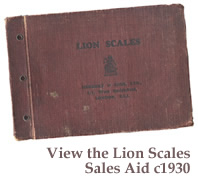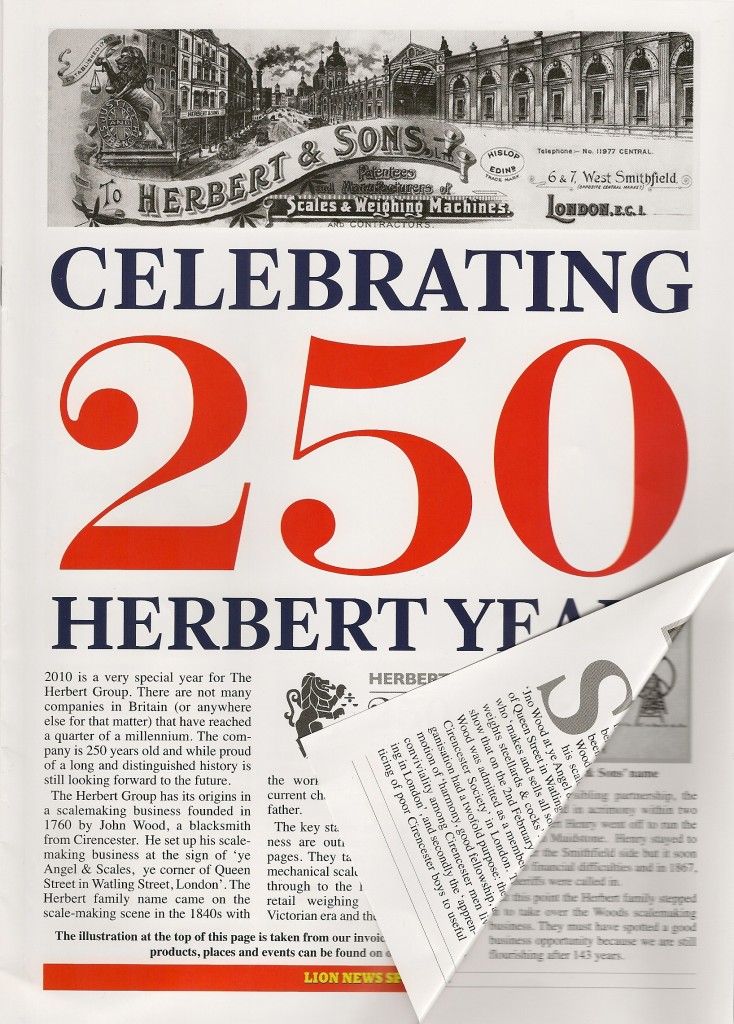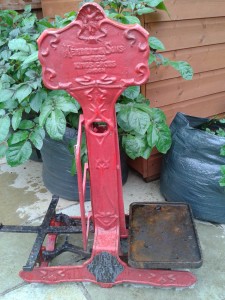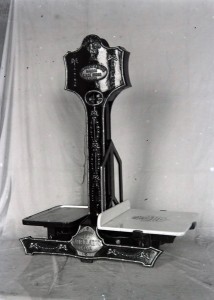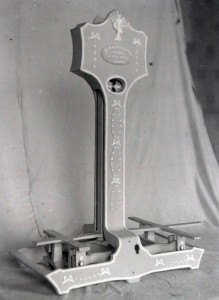Vibrato Balance ScaleThe Vibrato balance scale was designed by Thomas James Herbert, who after studying engineering at Finsbury Technical College joined his father at Herbert & Sons (Kings Cross) in 1898. His concept drawings for the Vibrato scale are included in a sketch pad of his, shown here.
The design of the scale was registered in 1907. Registration protected the decorative elements of a design from being copied and manufactured without permission.
The two black and white photographs of the scale shown on the right are taken from quarter plate glass negatives of the period,which are still in the possession of the family. Both are sub art-Deco designs which have substantive differences from the final production models.
It is believed that Plate 1 is a preproduction version, and that Plate 2 is a wooden mock-up which may have been constructed from the patterns used to make the moulds for sand casting.
The Vibrato scale was a well-engineered, easy to make, and easy to use weighing machine, but was a traditional balance scale which needed a set of weights to weigh the goods. It came on to the market shortly after automatic scales, where a pointer or similar device shows the exact weight on a chart or dial, had begun to appear in the USA. The next invention was a computing scale, where the chart is marked up with ‘price per lb/kg', so that it is possible to compute the price to charge the customer for the goods on the pan. The first computing scale had been patented by Julius Pitrat of Ohio in 1885. Six years later his patent was bought by two businessmen, who in 1901 incorporated The Computing Scale Company as the world's first computing scale vendor. After that date automatic and computing scales started to win market share in the US, then in the UK where they were introduced in about 1910.
Despite this, both Herbert & Sons Ltd and Herbert & Sons (Kings Cross) Ltd continued with their traditional pattern of balance scale. With the start of WW1 the businesses turned towards war work, many men left their regular jobs to enlist, and little product development for the retail market was carried out.
In 1922 Herbert & Sons Ltd agreed a joint venture with Vandome, Titford & Hart Ltd to form a new company, Rapidway Ltd, to import automatic scales from the US. However Rapidway failed to reach satisfactory terms with the manufacturer, and in the depressed post-war market the firms concentrated on balance scales such as the Lion Quick Action and the Vibrato scale.
Even as late as 1930 a page from one of our advertising books says "Inspectors (of Weights and Measures) know that ‘Lion' Quick Action Scales are 3 times more sensitive than is necessitated by the Board of Trade Regulations. A ‘Lion' Quick Action Scale after years of hard use is more sensitive than a new counter or automatic scale.” There was also a page in the book ‘knocking' "Auto's” and giving a list of "Some Traders who have replaced Auto's by Lion Quick Action Scales”.
Herbert & Sons Ltd did however develop a range of automatic scales which were launched shortly before WW11, but then another period concentrating on war work started in 1939, and few new retail scales were manufactured in those six years.
In 1947, Herbert & Sons Ltd bought the business of Herbert & Sons (Kings Cross) Ltd, by which time it is believed the manufacture of the Vibrato scale had ceased.
|
Click on the Image(s) For Detail |
